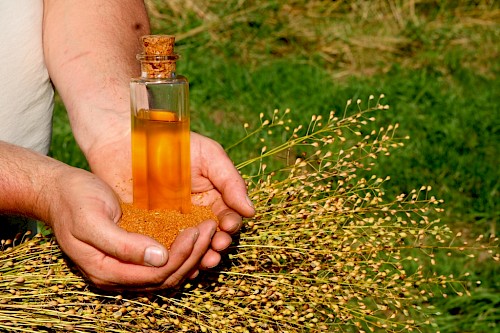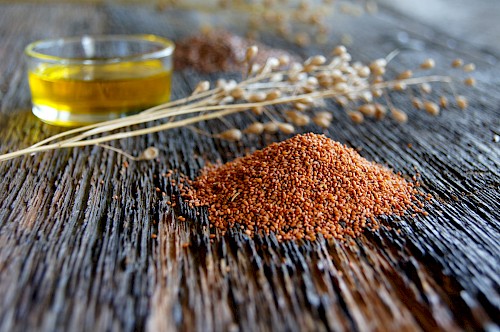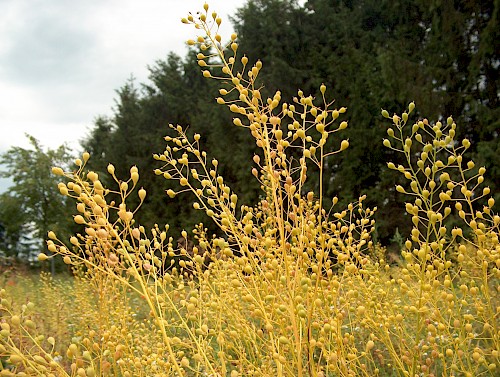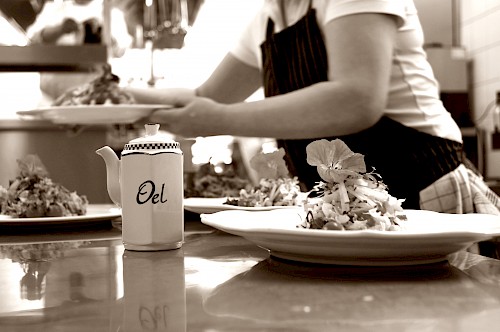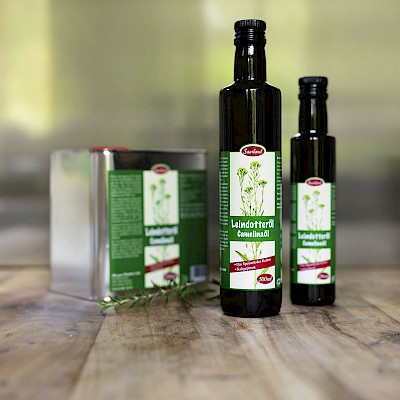Camelina oil in nutrition
It has been proven by nutritional science: having a diet that is high in plant oils prevents numerous diseases and health problems. It is, however, important to be aware that there are two different kinds of plant oil: industrially-processed, refined edible oil (which can be recognised by its general lack of aroma and taste and whose health benefits are doubtable) and cold-pressed edible oil, for example camelina oil, with its unspoiled taste, colour and positive characteristics.
Taste is the art of understanding the little things
Jean-Jacques Rousseau
Camelina in History
Camelina (Camelina sativa Crtz.) was first cultivated a very long time ago. It was being used as a dietary supplement as far back as the Stone Age. The Celts valued the seeds for their taste and their properties. In the late Middle Ages, oil plants that also provided fibres that could be used to make clothing became popular, such as hemp or flax. As camelina did not have any textile fibres, it was considered a 'weed' that reduced the yield of crops and it had no appeal for agriculture. Ist existence was practically forgotten.
